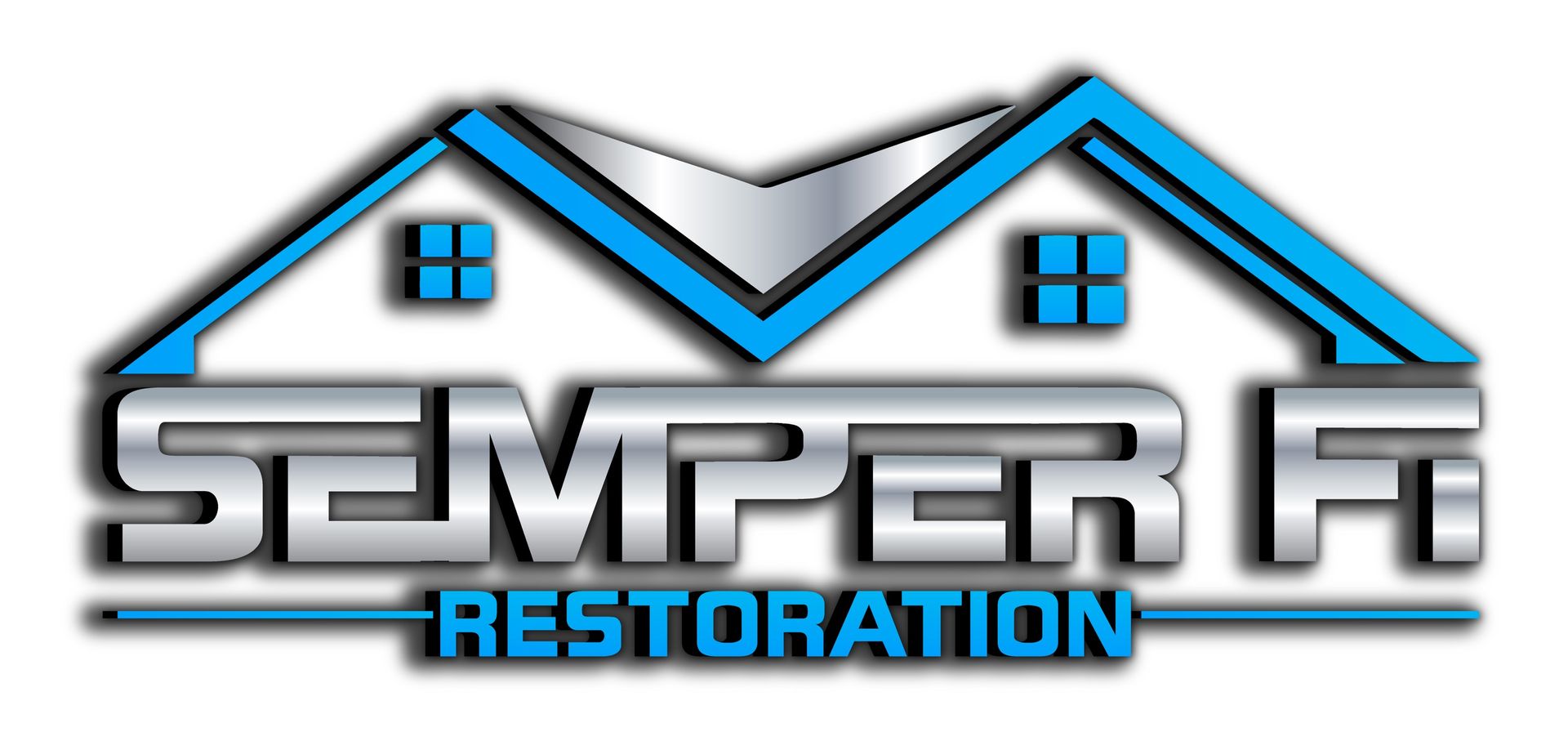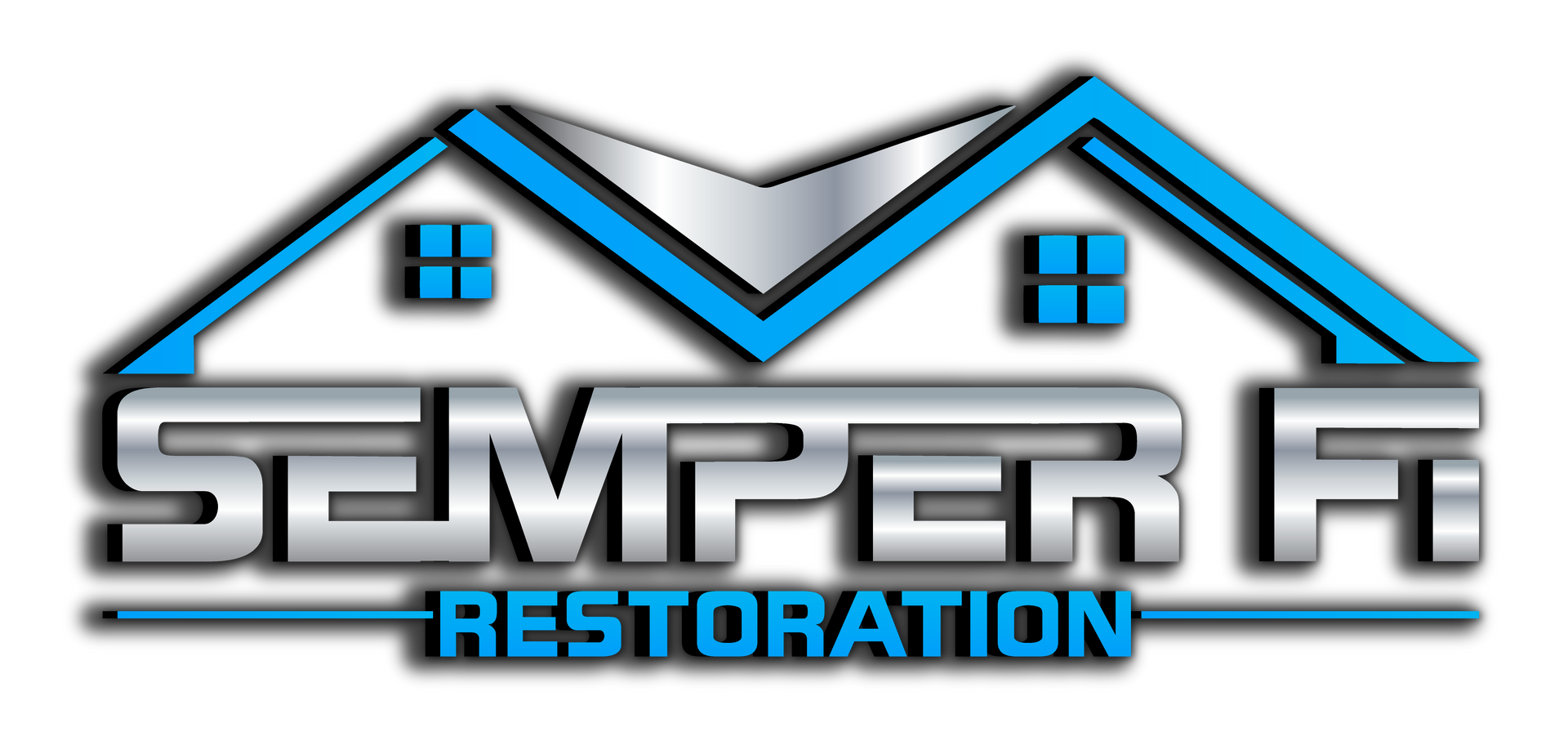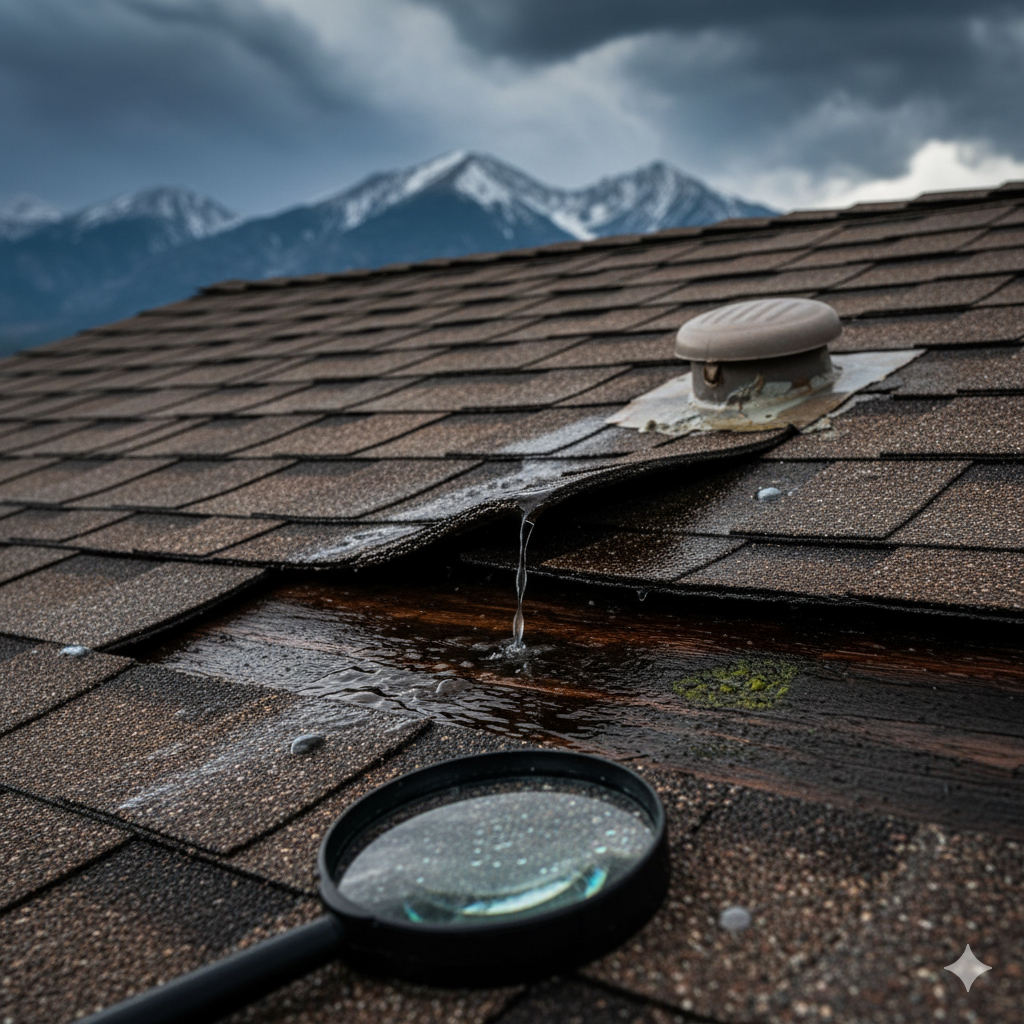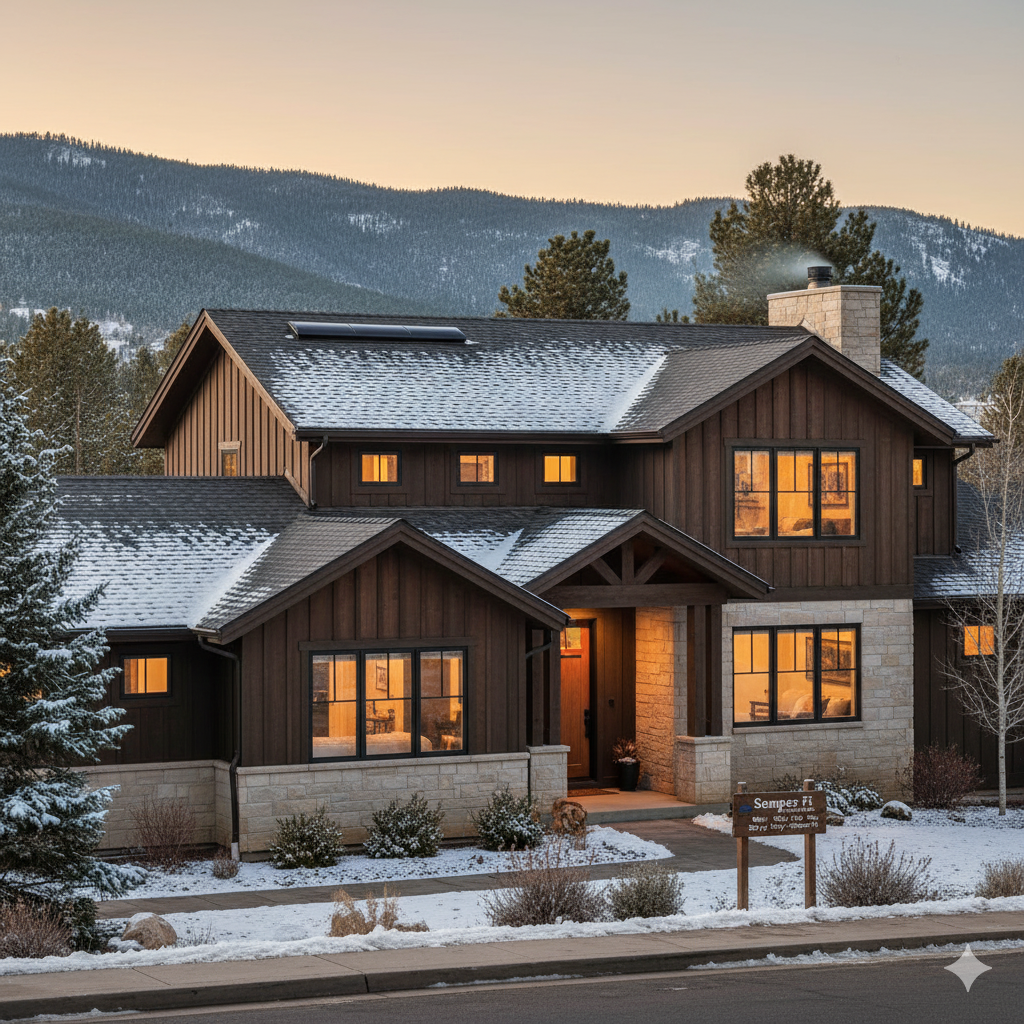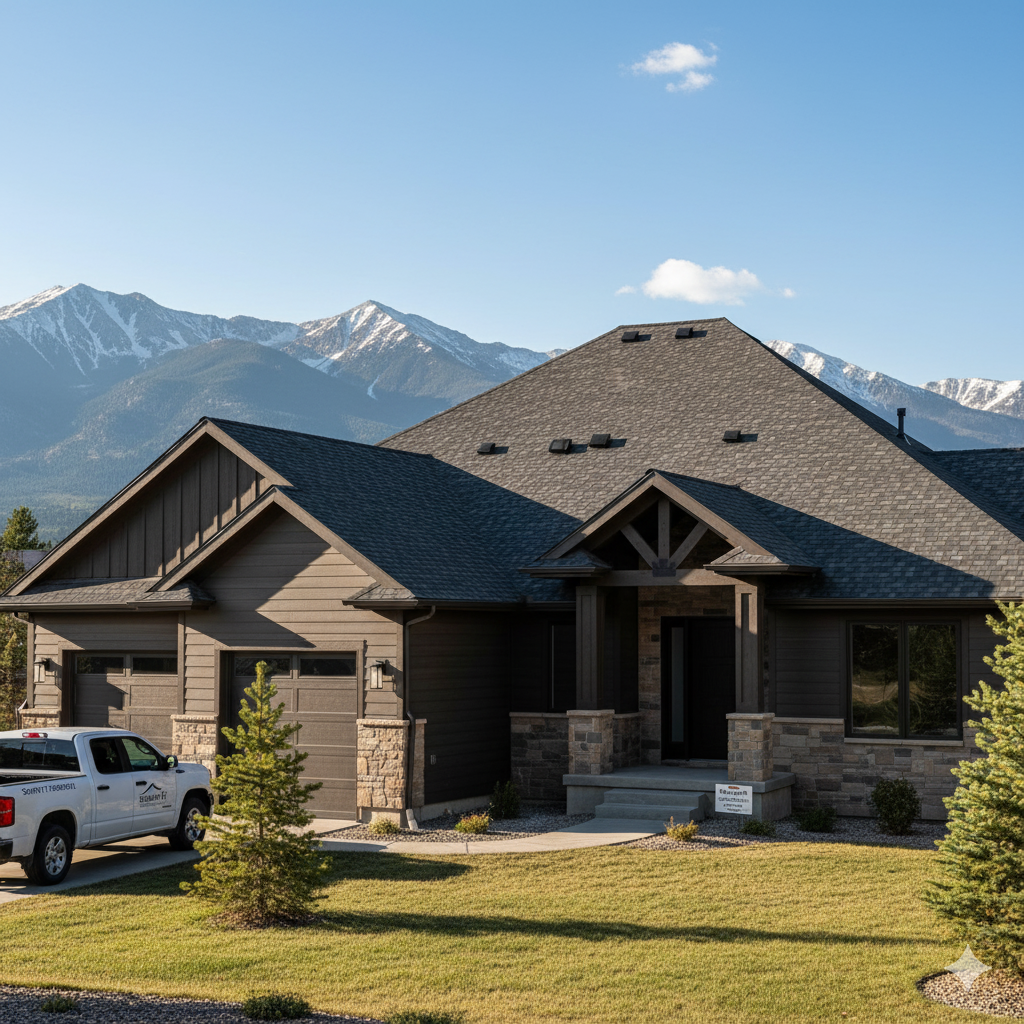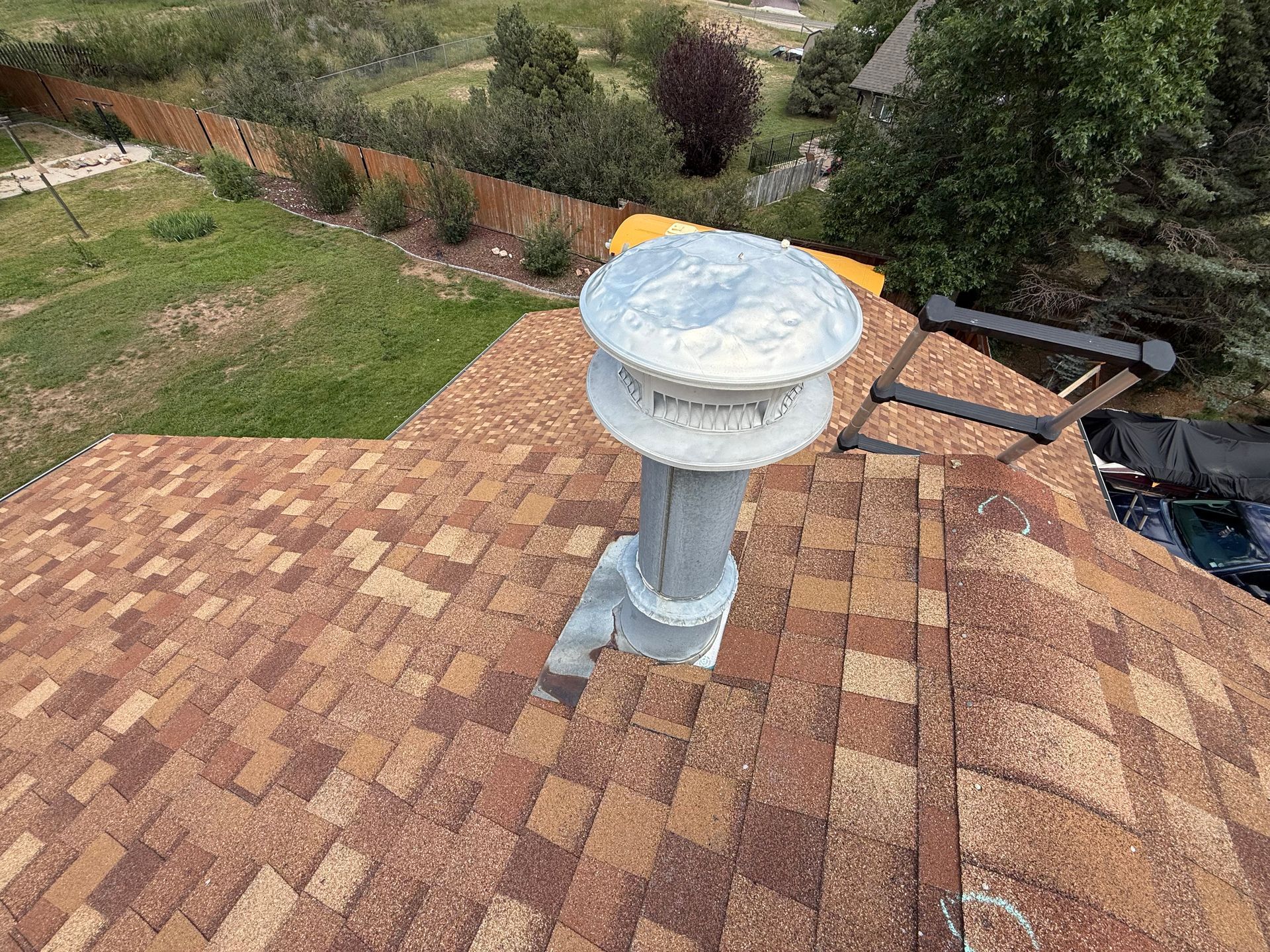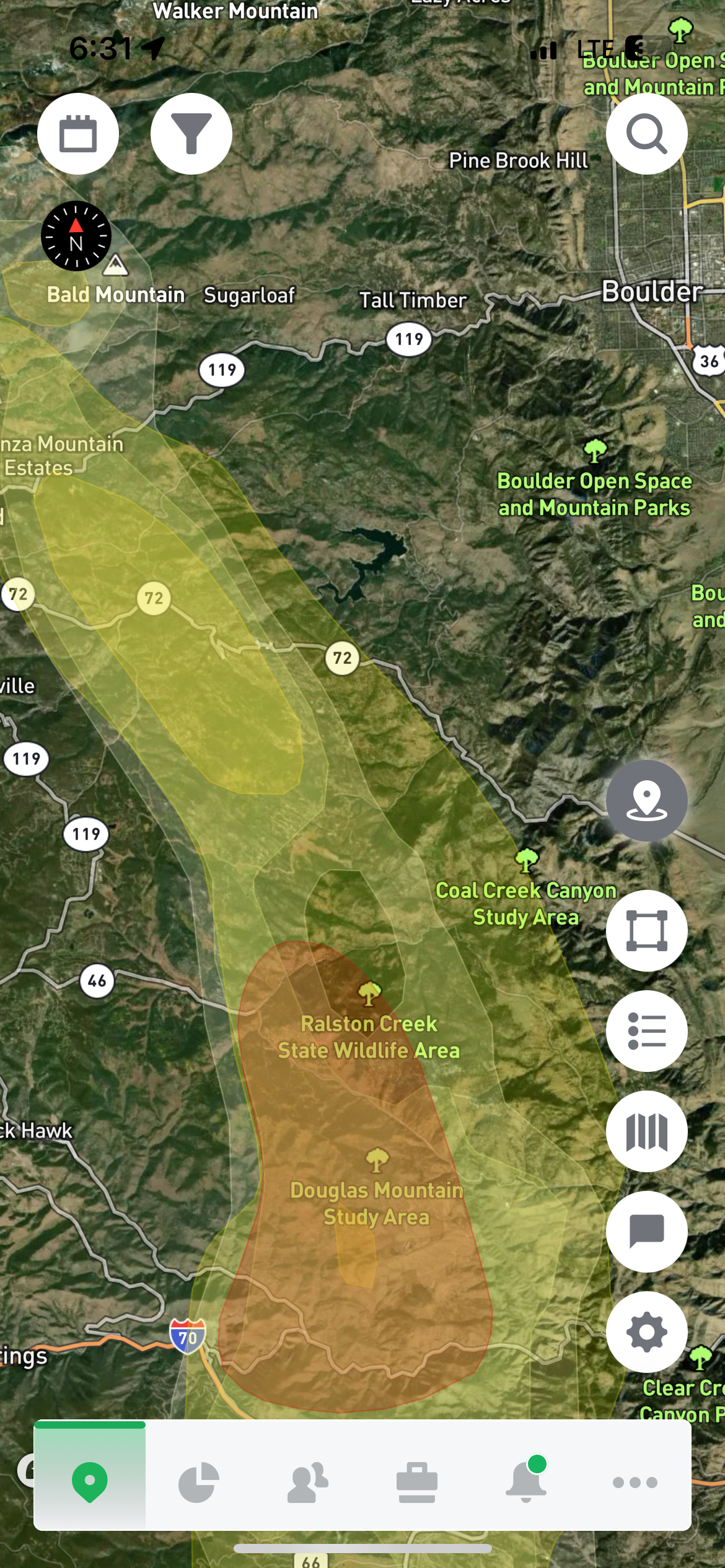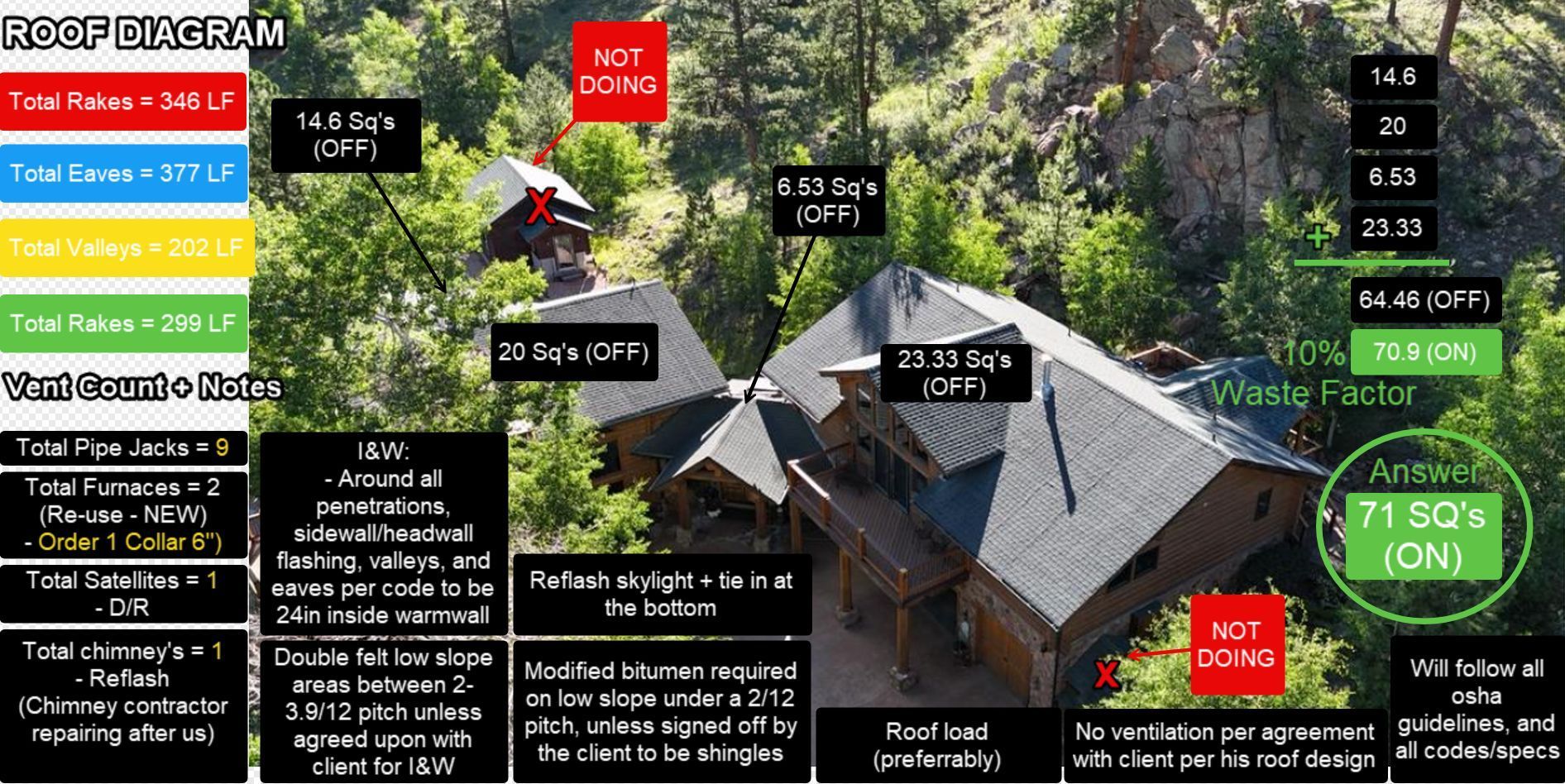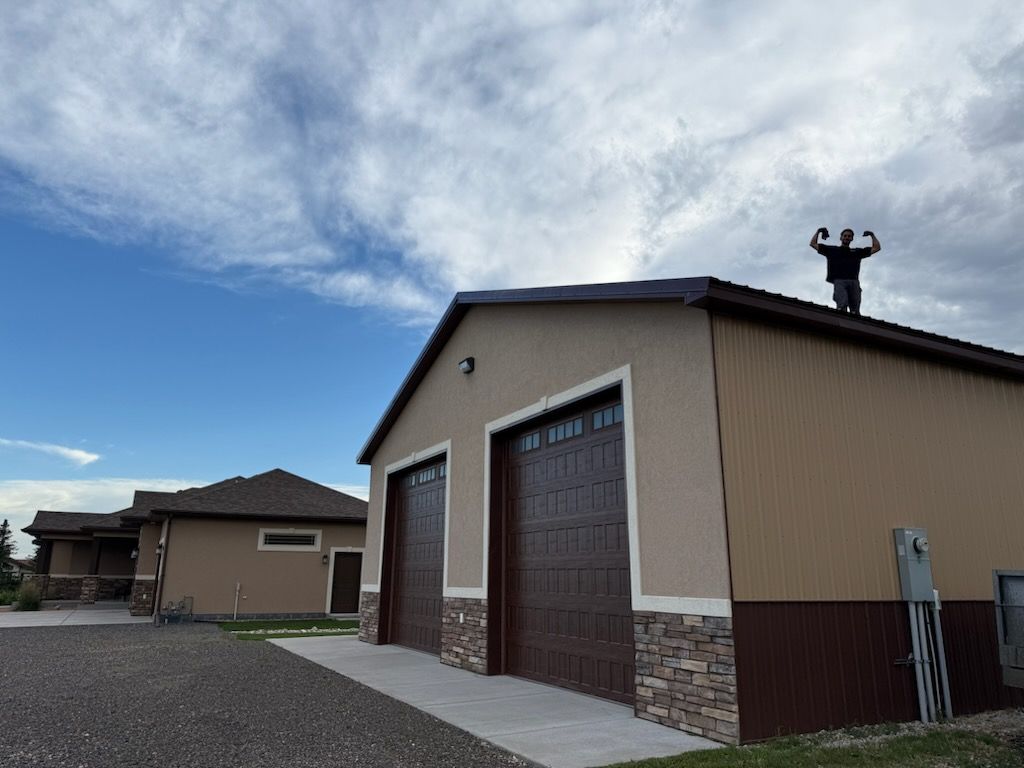Roof Repair Contractor: How To Choose The Ideal Local Expert
Elisa DeFoe • June 23, 2025
First, the TL;DR:
Choosing an ideal local roof repair contractor in Colorado, where harsh weather is common, requires a systematic approach to ensure quality and peace of mind. Homeowners should begin by precisely defining their roof’s needs, identifying visible damage, and understanding if repair or replacement is necessary. Next, compile a list of qualified local contractors through referrals and online directories, then rigorously verify their licensing, bonding, and comprehensive insurance coverage to protect against liability. It's crucial to assess a contractor's experience, specialization in storm damage, and company values, avoiding inexperienced providers. Evaluate their reputation by scrutinizing online reviews and contacting customer references. Always obtain detailed, itemized written estimates, comparing the scope of work, cost breakdowns, and warranty specifics. Inquire about their insurance claim assistance capabilities, ensuring thorough documentation and support. Before signing, meticulously review contract terms, understanding payment schedules, key clauses, and consumer protection rights like the three-day cancellation period. Consider bundling additional exterior services like gutters or siding for value. Finally, schedule a free on-site assessment, prepare your property, and make an informed decision based on data and instinct, confirming all project milestones for a smooth, lasting repair.

Roof Repair Contractor: How To Choose The Ideal Local Expert
A leaking ceiling or scattered shingles after a thunderstorm is enough to unsettle any homeowner. In Colorado, where hail and harsh weather are routine visitors, a well-maintained roof isn't just a cosmetic upgrade—it's a critical line of defense for your home. But when damage strikes, finding the right roof repair contractor can feel just as overwhelming as the storm itself. The difference between a quick patch and a lasting solution often comes down to the expertise and reliability of the professional you choose.
Choosing a trustworthy, local contractor is essential not only for the quality of repairs but also for your safety, your investment, and your peace of mind. The process involves more than a quick online search or a handshake agreement. It requires clarity on your repair needs, careful vetting of credentials, and a solid understanding of what reputable service truly looks like—from licensing and insurance checks to transparent estimates and insurance claim support.
This guide will walk you through each step, from identifying your roof’s issues to evaluating written proposals, ensuring you’re equipped to make a confident decision. Along the way, you’ll discover what to look for in a contractor, how to compare costs and warranties, and why local expertise makes all the difference for Colorado homeowners. If you’re ready to restore your roof and protect your home for years to come, let’s get started.
1. Define Your Roof Repair Needs
Before you reach out to contractors, take a moment to pinpoint exactly what your roof requires. A clear understanding of visible damage, underlying issues, and the range of services available will help you communicate effectively, avoid unnecessary costs, and ensure the bid you receive matches the work that’s needed. This preparation also speeds up on-site inspections, giving contractors a head start on diagnosing problems and providing accurate estimates.
Identify Visible Damage and Underlying Issues
Start with a careful walk-around and attic check. Look for these red flags that your roof may need attention:
- Missing, cracked or curling shingles
- Granule loss on shingles (granules in gutters or downspouts)
- Dark streaks or water stains on interior ceilings and walls
- Sagging roof deck or uneven rooflines
- Moss, algae or mildew growth on roof surfaces
Early detection prevents small problems from turning into costly structural damage—or worse, a mold infestation. As you inspect, document each issue with notes and photos. Consider creating a simple log like this:
- Date and time of inspection
- Exact location (e.g., northwest corner, above the garage)
- Type of damage (shingle, leak, sagging)
- Photo filename or reference
Having this checklist on hand not only guides your conversation with contractors but also serves as a record for potential insurance claims.
Differentiate Repair vs. Replacement
Not every roofing issue demands a full tear-off. Here’s how to decide:
- Age of your roof: If your roof is under 10 years old, targeted repairs often make sense.
- Extent of damage: A single leak or a handful of missing shingles usually calls for a repair. If damage exceeds roughly 30% of the roof surface, replacement may be more cost-effective.
- Roof condition and budget: Weigh the cost of repeated repairs against the long-term value of a new roof. A roof over 20 years old can lose its original waterproofing and structural integrity, even if only part of it appears damaged.
Actionable example: If you count damaged shingles and that ratio is damaged_shingles / total_shingles > 0.3
, or if your roof is pushing two decades, lean toward a full replacement.
Explore Roofing Services Offered
Once you know what your roof needs—whether it’s a patch job, a re-nailing of flashing, or a complete re-roof—you can match those needs to specific services. Common repair and replacement options include:
- Shingle and tile patch repairs
- Leak detection and sealing
- Flashing and valley repair
- Full roof replacements (tear-off and install)
Semper Fi Restoration offers all these services and more. Review our full suite of roofing services to see which options align with your home’s requirements and your homeowner’s budget.
2. Compile a List of Qualified Local Contractors
With a clear picture of your roof’s needs, it’s time to build a shortlist of trusted professionals. The goal here is to narrow down a broad field into a handful of contractors who not only have the right skills but also come highly recommended and work in your neighborhood. Start by tapping into local networks and then reinforce those leads with online research to ensure you’re not overlooking any red flags.
Ask for Referrals from Neighbors and Community
Word of mouth remains one of the most reliable ways to find quality roof repair contractors. Reach out to:
- Neighbors who recently weathered a hailstorm or heavy snow—ask to see their repaired roofs and get contractor details.
- Friends, family, or coworkers who’ve tackled similar projects.
- Local HOA groups or community social media pages where members often share vendor experiences, photos, and candid feedback.
When you collect referrals, don’t just note the name of the contractor—ask about responsiveness, project timeline, cleanup, and any surprises that popped up along the way.
Search Online Directories and Accreditation Bodies
Pair personal referrals with a sweep of reputable online platforms:
- Better Business Bureau (BBB): Look for “BBB Accredited Roofing Contractors” to confirm a clean track record and prompt complaint resolution.
- Google Business Profile and Yelp: Sort by rating and read a mix of positive and critical reviews to spot recurring themes.
- GuildQuality or Angi: These services vet members and collect homeowner satisfaction surveys.
By cross-referencing multiple sources, you’ll identify which companies consistently earn high marks—and which ones raise red flags like missed deadlines or unclear pricing.
Vet for Service Area Coverage
Local weather patterns, building codes and permitting processes vary even within the Denver metro. Choosing a contractor familiar with your exact region can save time and headaches. Confirm each prospect services your neighborhood—this is especially critical if you live on the outskirts of Brighton or in one of the mountain communities.
Check Semper Fi Restoration’s service areas to verify coverage. A contractor who’s handled dozens of local hail repairs will understand the nuances of material selection, municipal inspections and the insurance process specific to Northern Colorado.
3. Verify Licensing, Bonding, and Insurance
Before any shingles are lifted, confirm your roofing contractor has the credentials to work legally—and safely—in your neighborhood. Proper licensing, insurance and bonding protect you from liability, financial loss and substandard work. In Colorado, where regulations can differ county to county, this step is non-negotiable.
Understand Colorado Licensing Requirements
Colorado does not issue a statewide roofing license. Instead, licensing and permit requirements fall under local jurisdictions—counties and municipalities set their own rules. That means a contractor who is permitted in Denver might not automatically qualify in Larimer or Weld County. Always ask your roofer to provide copies of any local permits and license numbers, then verify them with your city or county building department. For a deeper dive into Colorado’s patchwork of roofing regulations, see this guide on Colorado roofing license requirements.
Confirm Insurance Coverage
A reputable contractor will readily share insurance certificates proving they carry:
- General liability insurance: Covers accidental property damage (e.g., a dropped tool that cracks a window).
- Workers’ compensation: Protects you from liability if a crew member is injured on your property.
Ask to see the declarations page for each policy—this shows coverage limits, policy numbers and expiration dates. If your roofer hesitates or can’t provide proof, move on. Without proper insurance, damages or injuries become your responsibility.
Check Bonding and Trade Certifications
A bond acts like a financial guarantee: if a contractor fails to complete the job, a surety company steps in to cover costs or finish the work. Request bond details—bond number, issuer and coverage amount—and confirm them with the issuing agency before signing any agreement.
Beyond bonding, look for manufacturer and trade certifications that signal advanced training and quality standards, such as:
- GAF Master Elite® or Owens Corning® Platinum Preferred
- CertainTeed SELECT ShingleMaster®
- Membership in the National Roofing Contractors Association (NRCA)
These credentials demonstrate a contractor’s commitment to industry best practices and often unlock enhanced warranties on materials and workmanship.
4. Assess Contractor Experience and Company Values
Not all roofers are created equal. Beyond licenses and insurance, you want a contractor whose track record and principles align with your project’s demands—especially in Colorado’s unpredictable weather. Evaluating a company’s years in business, core values, and niche expertise helps you avoid headaches down the line. Here’s what to look for when sizing up potential candidates.
Years in Business and Veteran-Owned Values
A contractor that’s been serving the community for several years demonstrates staying power. Longevity suggests they’ve weathered market ups and downs while consistently delivering quality work. Companies with a decade or more under their belt usually have streamlined processes, established vendor relationships, and a history of satisfied homeowners.
If supporting a veteran-owned business is important to you, ask about the owner’s background and team composition. Semper Fi Restoration, for example, was founded by a former Marine and instills Marine Corps values—discipline, integrity, and attention to detail—into every job. You can learn more about Semper Fi Restoration’s mission and Marine Corps–inspired values on their About Us page.
Specialization in Storm and Hail Damage
Colorado sees its fair share of hailstorms, and repairing that kind of damage is a specialty unto itself. A roofer who has tackled dozens of hail-related claims will know exactly which materials hold up best against impact, how to document damage for your insurer, and which installation techniques prevent future leaks.
When speaking with contractors, ask them to share before-and-after photos from past hail repairs. A solid portfolio will show not just patch jobs but full-system fixes—new underlayment, reinforced flashing, and shingle upgrades. If they can’t produce clear examples, keep searching; you want a team that treats storm damage restoration as a core service, not an occasional side gig.
Avoiding Inexperienced or Handyman-Only Providers
It can be tempting to hire a general handyman who offers a low hourly rate—but roofing projects come with unique safety risks and technical requirements. Handymen might lack specialized equipment like lift systems, magnetic nailers, or underlayment blowers, and they often subcontract out portions of the work without proper oversight.
Look for contractors who employ dedicated roofing crews and invest in industry-grade tools. Ask about their team structure: Do they have full-time installers and a project manager on site? Are crews trained in fall protection and shingle-specific techniques? If the answer is “we’ll bring in whoever’s available,” you risk uneven workmanship and longer project timelines.
By focusing on proven experience, clear values, and the right level of professionalism, you’ll zero in on a contractor equipped to deliver a durable, expertly executed roof repair—and the peace of mind that comes with it.
5. Evaluate Reputation Through Reviews and References
Your roof is only as good as the team that repairs it—so it pays to dig into a contractor’s past performance. By examining online reviews, speaking directly with previous clients, and interpreting case studies or testimonials, you can separate hype from hard evidence of quality workmanship. This step helps you spot consistent strengths (and any recurring weaknesses) before you commit to a contract.
Read Online Ratings and Reviews
Start by checking multiple review platforms to get a balanced perspective:
- Google Reviews: Look at overall ratings and read both high- and low-star feedback. Pay attention to how the company responds to criticism.
- Better Business Bureau (BBB): An “A+” rating and prompt resolution of complaints are good signs.
- Yelp and Angie’s List/Angi: These sites often include detailed write-ups and photos. Sort reviews chronologically to see if recent jobs maintain the same quality level.
Watch for red flags such as repeated complaints about missed deadlines, unexpected fees, or poor cleanup. One or two negative comments among dozens of glowing reviews isn’t overly concerning—but a pattern of similar issues should give you pause.
Request and Contact Customer References
Online reviews can be curated, so ask contractors for three recent homeowners you can call or email. When you reach out, keep your questions focused and consistent:
- “Did the final price match the original estimate?”
- “How did the crew communicate schedule changes or unexpected issues?”
- “Was your property left clean each day?”
- “Would you hire this contractor again?”
Hearing these candid answers helps you verify the claims made in sales pitches. It also gives insight into less tangible factors like professionalism and reliability.
Analyze Testimonials and Case Studies
Testimonials and before-and-after galleries go beyond star ratings by showcasing real outcomes. Look for common themes rather than isolated successes:
- Quality of Workmanship: Are customers repeatedly praising the attention to detail?
- Punctuality: Do homeowners note that the project finished on time?
- Responsiveness: Does the team handle questions promptly throughout the job?
Here are two examples drawn from client feedback (names changed for privacy):
“Semper Fi Restoration arrived early each morning, replaced all damaged shingles, and even spotted a minor leak we hadn’t noticed—no extra charge. They cleaned up so thoroughly you’d never know they’d been there.”
“Our insurance claim felt overwhelming, but the crew guided us through every form and photo we needed. Final costs matched the initial quote exactly, and the new roof looks great five months later.”
By cross-checking these testimonial themes against online reviews and direct references, you’ll gain a clear picture of a contractor’s strengths—and make an informed decision for a worry-free repair.
6. Obtain Detailed Written Estimates
Once you’ve narrowed your list of candidates, request written estimates from at least three contractors. Detailed, side-by-side quotes help you spot hidden fees, incomplete scopes, and material discrepancies. Don’t settle for a rough phone total—insist on a fully itemized proposal so you can compare apples to apples.
Compare Scope of Work Line by Line
A comprehensive estimate should break out each element of the job:
- Materials (shingles, underlayment, flashing)
- Labor hours or crew rates
- Removal and disposal of old roofing
- Cleanup and site protection
Create a simple comparison table to see where contractors differ:
| Scope Item | Contractor A | Contractor B | Contractor C |
|---|---|---|---|
| Shingles (brand/type) | GAF Timberline | Owens Corning™ | Malarkey Vista |
| Underlayment | Synthetic Felt | Ice & Water Barrier | Synthetic Felt |
| Labor (hours) | 16 hrs @ $75/hr | 18 hrs @ $80/hr | 14 hrs @ $70/hr |
| Tear-off & Disposal | $600 | $750 | $500 |
| Cleanup & Haul-off | Included | $150 | Included |
| Total Estimated Cost | $3,200 | $3,680 | $2,850 |
This grid reveals differences in material quality, labor rates, and hidden charges—allowing you to ask targeted questions and ensure every line item aligns with your expectations.
Understand Cost Breakdown and Payment Schedule
Roof repairs can range significantly in price. For minor fixes you might pay as little as $300 to $1,900, while extensive work—like replacing decking or a large hail-damaged section—can climb toward $8,000. When reviewing payment terms, keep these points in mind:
- Deposit: 10–20% of the total cost is common upfront to secure materials and permits.
- Progress payments: May link to milestones (e.g., “50% due after tear-off”).
- Final payment: Held until you sign off on completed work and cleanup.
If a quote requests more than 30% upfront, ask why. You can also validate the deposit mathematically:
down_payment = total_estimate * 0.2
For a $5,000 job, a 20% deposit equals \$5,000 * 0.2 = \$1,000
. Anything substantially higher could indicate cash-flow issues or potential bait-and-switch tactics.
Verify Materials, Brands, and Warranties
Not all shingles, underlayments or flashing systems are created equal. Confirm that each estimate specifies:
- Shingle brand, style and warranty (e.g., 30-year vs. 50-year)
- Underlayment type (
syntheticvs.felt) and ice-water barrier locations - Flashing material (aluminum vs. galvanized steel)
Beyond manufacturer warranties, ask about the contractor’s workmanship guarantee. A strong proposal will clearly outline:
- Manufacturer warranty (parts coverage period)
- Contractor workmanship warranty (labor coverage period)
- Warranty activation steps and any required homeowner maintenance
By scrutinizing these details, you’ll choose a contractor who not only offers a competitive price but also the right products and protections to keep your roof secure for years to come.
7. Inquire About Insurance Claim Assistance
Storm damage often means more than a simple repair—it can trigger an insurance claim and a stack of paperwork. A contractor who’s familiar with insurance companies can ease this burden, ensuring you maximize your coverage and avoid costly mistakes. Before signing a contract, carve out time to ask each roofer how they handle claims, what documentation they provide, and how they coordinate with your insurer.
Working with a contractor that offers insurance claim support means you’ll have an advocate who understands the claims process from start to finish. They can document hail impact, compile repair estimates to meet adjuster requirements, and even accompany you during the on-site inspection. This hands-on guidance often translates into quicker approvals, fewer rounds of back-and-forth, and a more transparent path to restoring your home.
To see how Semper Fi Restoration streamlines this process, take a look at our dedicated insurance claims help page. It outlines the steps we take—from initial damage assessment to final claim approval—to get your roof back in shape without you having to chase down every detail.
Inquire About Insurance Claim Support
When you speak with each contractor, ask specific questions like:
- “Do you prepare and submit the full scope of work directly to my insurer?”
- “Will you schedule and attend the adjuster’s inspection with me?”
- “How do you handle supplement claims if additional damage appears?”
A contractor who offers robust claim support will walk you through each step, often handling paperwork, photo logs, and adjuster communication on your behalf. That level of service not only saves you time but also helps ensure no damage goes undocumented.
Documenting Damage and Communication
Accurate, thorough documentation is the backbone of any successful claim. Start by creating a damage log that includes:
- Date and time of each photo or video
- Location on the roof (e.g., south-facing slope, chimney area)
- Description of what you see (hail dents, missing granules, cracked shingles)
Actionable example: Set up a shared online folder—Google Drive, Dropbox, or similar—to store and organize images, notes, and email threads. Invite your contractor and insurer to collaborate in one central spot. This approach reduces misunderstandings, keeps everyone on the same page, and provides a digital paper trail if questions arise later.
Role of Public Adjusters vs. Contractor Advocates
It’s easy to confuse a public adjuster with a contractor’s in-house claim support. A public adjuster is an independent professional you hire—often for a percentage fee—to negotiate directly with your insurance company. Contractor-provided assistance, by contrast, is typically included or offered at a flat rate as part of your repair contract.
Before committing, clarify who will communicate with your insurer, what fees apply, and how that involvement impacts your final coverage. Knowing the difference helps you choose the option that best balances expertise, cost, and convenience—so you can focus on replacing damaged shingles, not chasing paperwork.
8. Review Contract Terms and Consumer Protections
Before any shingles are lifted or deposits exchanged, you’ll want a clear, written agreement that safeguards your interests and meets Colorado’s legal requirements. A solid contract lays out what you’ll get, how much you’ll pay, and what happens if something goes sideways—so you avoid unwelcome surprises once work begins. Take the time to read each clause and ask for clarification on anything vague; this diligence can save you from headaches later on.
Review Written Contract Requirements
Every home improvement contract in Colorado should include the basics—and then some. At minimum, your agreement must list:
- Contractor’s full name, address and contact information
- Detailed description of the work (materials, scope and any exclusions)
- Total project cost, including labor and disposal fees
- Start and expected completion dates
- Payment schedule with deposit, progress and final payment terms
These elements are spelled out in the Colorado AG guidance on home repair contracts to help homeowners understand what’s non-negotiable. If any of these items is missing or too vaguely defined (“roof repairs as needed”), insist on a revised draft that spells out exactly what you’re hiring the crew to do.
Identify Key Clauses and Penalties
Contracts often hide critical details in the fine print. Watch for provisions like:
- Change orders: How will unexpected repairs or upgrades be priced and approved? A fair clause requires written consent before any additional work or costs are added.
- Delay penalties: Does the contractor face financial consequences if they push past the agreed completion date? Reasonable penalties can keep the job on track, especially with Colorado’s short summer window.
- Cleanup responsibilities: Who handles daily debris removal, and is post-project cleanup included in the price? You don’t want to foot an extra bill for hauling off old shingles.
Also look for a clear dispute resolution process—whether it’s mediation, arbitration, or small claims court. That way, if disagreements arise, you already know the agreed path forward.
Know Your Cancellation and Rescission Rights
Colorado homeowners enjoy a brief “cooling-off” period on home improvement contracts. Under state consumer protection laws, you generally have three business days to cancel without penalty after signing. To exercise this right:
- Send a written cancellation notice—email or certified mail both count—within the three-day window.
- Keep a copy of the signed contract and any proof of delivery for your records.
Beyond rescission, make sure the contract details how either party can terminate the agreement for cause, such as unresolved safety violations or repeated missed deadlines. Understanding these rights upfront gives you the confidence to move forward, knowing you’re protected if things don’t go as planned.
9. Explore Additional Exterior Services for Bundled Value
Roof work often reveals opportunities to refresh other parts of your home’s exterior—think gutters full of granules, faded siding, or chipped paint that leaves trim vulnerable. Tackling these tasks alongside your roof repair can streamline scheduling, reduce labor costs, and deliver a more cohesive finish. By considering complementary services, you’ll not only protect your investment but also boost curb appeal and simplify project management.
Gutter, Siding, and Exterior Painting Services
A new roof pairs naturally with updated gutters, fresh siding, and a modern paint job. Well-fitted gutters channel water away from your home’s foundation, preventing basement leaks and soil erosion. New siding—or repairs where boards have warped or cracked—helps seal against drafts and moisture. Finally, a quality exterior paint coat both protects timber and masonry and gives your home an instant facelift.
Semper Fi Restoration bundles these offerings under one roof: explore our exterior services overview to see how seamless gutter installation, durable siding options, and professional painting come together to safeguard your home’s envelope.
Bundling Services to Save Time and Money
When roofers handle multiple exterior tasks in one visit, you cut down on repeat mobilizations, paperwork, and permit fees. For example, combining roof replacement with gutter installation allows crews to coordinate scaffolding and safety equipment, reducing setup costs. Pairing siding repairs with painting means fewer surface preparations—and often a package discount on materials.
Actionable scenario: If your quote for a standalone gutter upgrade is $1,200 and a siding refresh is $3,500, a bundled package might land at $4,900—saving you $300 without sacrificing quality.
Evaluating Full-Service Contractor Benefits
Working with a single, full-service contractor removes the headache of juggling multiple bids and timelines. You get one point of contact for questions, unified warranty coverage across trades, and consistent craftsmanship standards. Should an issue arise—say a leak where new shingles meet fresh siding—you won’t be ping-ponged between different companies.
Moreover, warranties often stack: a roof warranty, for instance, might require professional gutter channels and proper paint sealants to remain valid. A full-service provider ensures every component meets those manufacturer specifications, giving you stronger protection and a cleaner billing process at the end of the job.
By bundling exterior services with your roof repair, you streamline communication, simplify invoicing, and often unlock savings—making the whole project feel less like a handful of to-dos and more like a coordinated upgrade that adds lasting value.
10. Schedule and Prepare for Your Roof Assessment
After narrowing your contractor list and comparing estimates, the next step is to get an accurate, on-site evaluation. A professional roof assessment confirms the extent of damage, uncovers hidden issues, and forms the basis of a precise proposal. Here’s how to schedule your free inspection, get your property ready, and know what to expect when the assessor arrives.
Schedule a Free Initial Inspection
Reach out as soon as possible—especially after a storm—to secure your spot in the inspection queue. Most reputable roof repair contractors, including Semper Fi Restoration, offer no-obligation, complimentary assessments. When you call or complete an online request, be prepared to provide:
- Your property address and preferred inspection dates
- A brief description of visible damage or concerns
- Any background on recent leaks, streaks, or missing shingles
Prompt scheduling helps you beat the seasonal rush and aligns your repair timeline with weather windows. If your roof has active leaks, let the scheduler know so they can prioritize your inspection.
Prepare Your Property and Questions
A few small preparations can streamline the assessment and keep everyone safe:
- Clear the yard of obstacles like toys, patio furniture, or garden tools.
- Secure pets indoors or in a fenced area away from the driveway.
- Note any interior signs of water intrusion—stains, peeling paint or soft spots in the attic.
- Jot down a list of your top questions, for example:
- “How long will repairs take once approved?”
- “Who will be my primary point of contact?”
- “What safety measures do you use during work?”
Having this checklist ready ensures the inspector can focus on the roof, not on dodging debris or tracking down your concerns.
Understand What to Expect on Inspection Day
Most roof assessments take 30–60 minutes, depending on the size and complexity of your roof. Here’s a typical flow:
- Safety Briefing: The assessor reviews the walkaround plan and points out potential hazards like low branches or uneven ground.
- Exterior Examination: They’ll either climb onto the roof or deploy a drone for hard-to-reach areas, checking shingles, flashing, gutters and underlayment conditions.
- Attic Check: Inside, they’ll look for signs of moisture, rot or poor ventilation that don’t show up from the exterior.
- Preliminary Discussion: On the spot, you’ll get an overview of findings and a rough timeline for the formal proposal.
After the visit, you can expect a detailed report—often with photos and repair recommendations—delivered via email or in a follow-up call. This documentation becomes the foundation for your estimate and, if needed, your insurance claim.
By scheduling promptly, preparing your home, and knowing what happens on inspection day, you’ll set the stage for a smooth assessment and move one step closer to a secure, professionally repaired roof.
11. Make the Final Decision and Book Your Contractor
After narrowing down your options, it’s time to choose the contractor who’ll deliver top-quality results without surprises. Balancing facts with your gut feeling ensures you’re confident moving forward. Here’s how to seal the deal and prepare for a smooth start.
Compare Final Proposals and Trust Your Instincts
Lay out your top estimates side by side and rate each on key factors: price, scope clarity, reputation, and communication. A simple scoring system can help:
| Factor | Weight | Contractor A | Contractor B | Contractor C |
|---|---|---|---|---|
| Cost | 30% | 8 (2.4) | 7 (2.1) | 9 (2.7) |
| Scope & Details | 25% | 9 (2.25) | 8 (2.0) | 8 (2.0) |
| Reputation | 25% | 8 (2.0) | 9 (2.25) | 7 (1.75) |
| Communication | 20% | 7 (1.4) | 8 (1.6) | 9 (1.8) |
| Total | 100% | 8.05 | 7.95 | 8.25 |
The numbers in parentheses are the weighted scores ( rating × weight
). Which contractor scores highest? That data-driven view, combined with how you felt talking to each team, points you to the best choice.
Confirm Start Date, Timeline, and Project Milestones
Before signing, lock in a clear schedule. Your contract should spell out:
- Permit pull date
- Materials delivery window
- Number of workdays and expected completion
- Built-in buffers for rain or supply delays
A shared calendar or Gantt-style timeline makes it easy for you and the crew to stay on track. Confirm who your onsite point of contact is, so any hiccups can be resolved fast.
Prepare for Workday and Post-Project Follow-Up
Get ready for the big day:
- Move patio furniture, grills and potted plants away from the work zone.
- Let neighbors know about the schedule—they’ll appreciate the heads-up.
- Secure pets indoors or in a fenced area to keep everyone safe.
Once the job is done, schedule a final walkthrough with your contractor. Inspect the roof together, check that debris has been cleared, and confirm any warranty paperwork or maintenance instructions. With those details squared away, you’ll wrap up the project knowing you’ve hired the right team for lasting peace of mind.
Ready to Secure Your Local Roof Repair Expert
You’ve gained clarity on what your roof needs—whether it’s a targeted patch, hail-damage restoration, or a full replacement—and learned how to:
- Pinpoint visible damage and log photos for a clear scope
- Compile a shortlist of vetted local contractors
- Verify licenses, insurance, and bonding to stay protected
- Compare itemized estimates, warranties, and payment schedules
- Navigate insurance claims with confidence and expert support
By following these steps, you’re well prepared to choose a contractor who delivers lasting quality and peace of mind, not just a temporary patch.
At Semper Fi Restoration, our veteran-owned team upholds integrity, precision, and efficiency on every job. We know Colorado’s weather challenges and work closely with you—through free inspections, transparent estimates, and dedicated insurance-claim assistance—to restore and protect your home’s first line of defense.
Ready to take the next step? Visit Semper Fi Restoration and request a free roof assessment today. Your roof’s future—and your peace of mind—depend on the expert you choose.
The body content of your post goes here. To edit this text, click on it and delete this default text and start typing your own or paste your own from a different source.
We'd love to do a complimentary roofing assessment for you!
